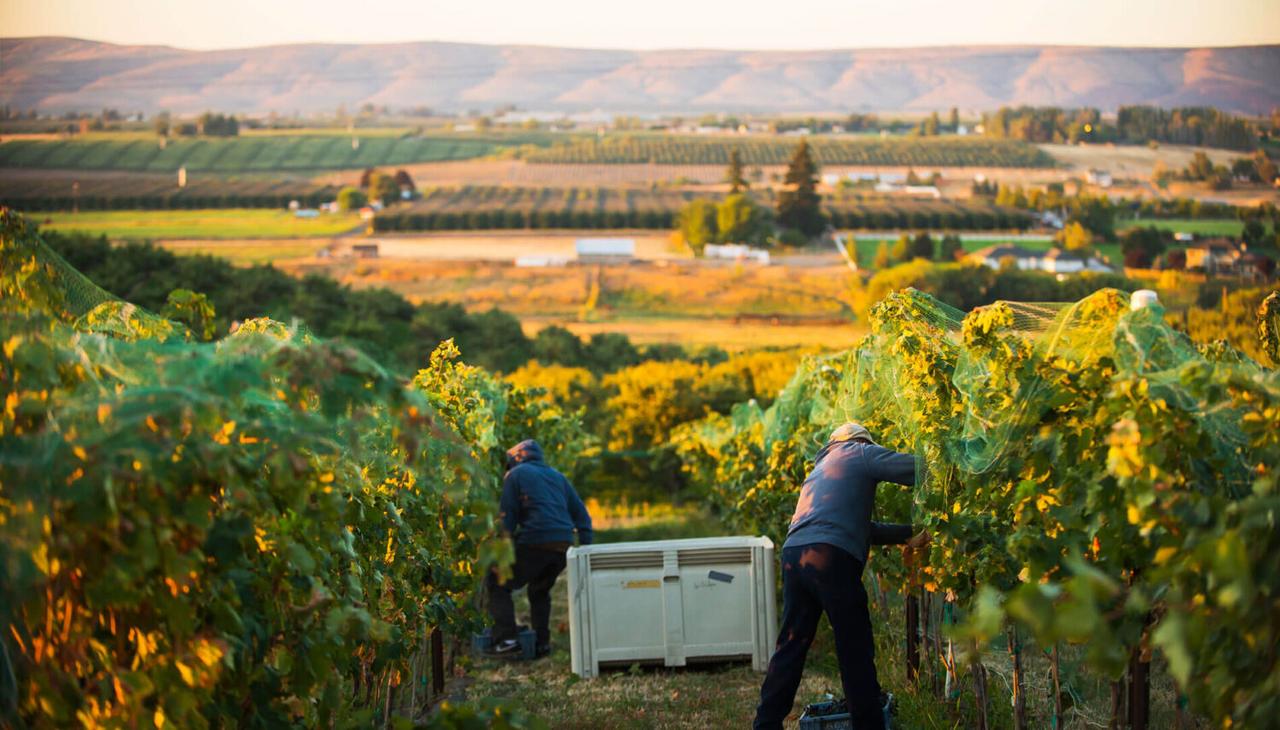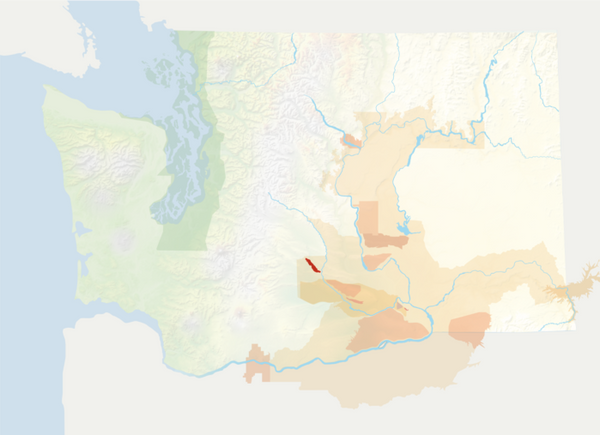
Naches Heights AVA
Naches Heights is known for vineyards that are farmed organically, biodynamically, or otherwise sustainably. The AVA's first vineyards were planted in 2002.
Key statistics
2011
41 acres
10-13 inches

Characteristics
About the region
Naches Heights is situated between the small towns of Naches and Tieton, northwest of the city of Yakima, in the foothills of the Cascade Mountains. The appellation is located on a million-year-old lava flow.
The Naches Heights appellation is a generally flat plateau, increasing gently in elevation from southeast to northwest. It is considerably raised from the surrounding area, with elevations ranging from 1,200 to 2,100 feet. This elevation and gentle grade help colder air drain into lower lying areas, reducing the risk of frost damage.
Naches Heights is distinct from a number of Washington’s growing regions in that it is above the level of the Missoula Floods, a series of repeated, cataclysmic events that define the majority of Washington’s grape growing regions. Unlike these areas, which have alluvial soils, Naches Heights is all windblown soil, which continues to accumulate. The soil also contains a significant amount of clay, helping to retain water.
Naches Heights is a new grape growing region, with its first vinifera plantings in 2002. Intriguingly, all of these vineyards are farmed either organically, biodynamically, or salmon-safe, with some a combination. The area is a sub-appellation of the Columbia Valley.

